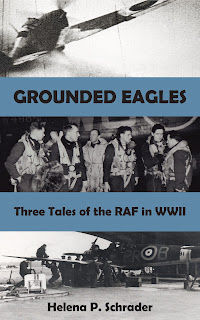Biographical fiction is the art of bringing historical figures
back to life. It turns a name in the history books into a person so
vivid, complex, and yet comprehensible that history itself becomes more
understandable. Good biographical fiction provides insight into the
psychology of real historical characters and so helps explain the
historical events these men and women helped shape by explaining the
motives and character traits that drove them to play their role in
history.*

Writing biographical fiction is not easy and it has some unique
challenges. As with writing history of any kind, there are always gaps
in the historical record and events so controversial or complex that
they produce multiple, conflicting accounts. When writing biography,
however, there is the added challenge of trying to understand motives
for recorded actions and the emotions of the individuals involved ―
unless, of course, the subject kept diaries or wrote letters and memoirs
describing emotions. In that case, however, the biographer is
confronted with the equally challenging issue of how honest or
self-serving such documents are!
Biographers like historians, whether working in fiction or
non-fiction, must fill in gaps, select between competing accounts of
events, and speculate about motives and emotions. Non-fictional
biographers do this openly by discussing the different possible
interpretations and explaining the reasoning behind their analysis of
the character’s actions and motives. Novelists do this by turning their
analysis of events into a novel and their interpretation of the
personalities into characters.
For the biographical novelist, the historical record is therefore the
skeleton ― or plot ― of the book. History, not the novelist, defines
the beginning and the end of the principal character, and indeed all the
essential historical events in between. But most readers do
not want to read about skeletons, certainly not inert ones. They want
characters with flesh and blood – with faces, emotions, dreams, and
fears. The goal of a biographical novelist is to add contours, colours,
animation and above all personality to that historical skeleton.
The novelist’s toolbox for fleshing out a historical skeleton
includes research into the “skeleton’s” family background, social
status, and profession (and that of the “skeleton’s” ancestors, spouse
and partners as well). It includes investigating the customs and culture
of the society in which the “skeleton” lived, the legal system to which
he or she was subject, the technology and fashions of the age and
more. In addition, the biographer (whether for fiction or non-fiction)
must also investigate the biographies of known figures who influenced
the subject: e.g. their parents, siblings, spouses, colleagues,
superiors and subordinates, partners, opponents and rivals.
Only after the biographer has developed an understanding of the
environment in which the subject lived and the relationships the
historical figure had with his contemporaries is it possible to start
constructing a plausible character. Based on this research, the
novelist evolves an understanding of why the subject acted in one way
or another. The novelist is able to hypothesize the emotions the subject
likely felt in certain situations, and to understand the fears,
inhibitions, ambitions, and obsessions that might have driven, inspired,
warped, and hindered the protagonist. An excellent example of this is
Sharon Kay Penman’s biographical novel of Richard III, The Sunne in Splendour.
She effectively explains King Richard III by showing how his childhood
relationships with his brothers and his Neville cousins made him the man
he became.
So far, so good, but a good novelist, in contrast to a non-fiction
biographer, also wants to address readers at a literary level. A good
novel is not just accurate history about engaging characters, it should
also have some compelling themes that will keep the reader thinking
about the book long after the reading is over. In biographical fiction,
however, the historical skeleton limits a novelist’s freedom of action.
It is not possible to give a biographical novel about Anne Boleyn a happy ending!
So this is where it gets tricky ― and bit controversial: a
biographical novelist striving to produce a work of art may feel the
need to deviate – carefully, selectively, and
strategically – from the historical record. This is not about giving a
character two heads, or only one hand: it is about changing very subtly
some of the “flesh and blood.”
Let me give an example from the world of painting. The surviving
contemporary paintings of Isabella I of Castile painted by unknown
artists who may have met her are not terribly flattering or
inspiring.
However, there are many portraits of Isabella by subsequent
artists who had certainly never laid eyes on her yet are far more
evocative and appealing. These later works may not as accurately depict
Isabella’s physical features, yet they may capture her spirit in that
they make the viewer see aspects of Isabella’s known personality – her piety combined with her iron will, and so on.
This explains how different works of biographical fiction about
the same subject can be very different ― yet equally good. Is Schiller’s
or Shaw’s Joan of Arc better? I cannot say offhand which one historians
would choose as more accurate, but I do know that both – regardless of which is more accurate – are great works of biographical fiction.
Creating a work of art requires clarity of purpose, consistency of
style, and a proper use of light and dark. It requires not only
extrapolating and interpreting, but some outright falsification. In a
novel, it almost always requires the creation some fictional characters –
servants or friends, lovers or rivals – that serve as foils for
highlighting character traits, explain later (known) behavior, or
provide contrast in order to give the central character deeper contours.
However, from my experience as a writer of non-fictional biography (Codename Valkyrie: General Olbricht and the Plot Against Hitler)
and biographical fiction (the Leonidas of Sparta trilogy and the Balian
d’Ibelin trilogy), the greatest challenge for the biographical novelist
is paring away or condensing some of the known facts or
strategically making changes to the historical record in order to
produce a clearer and more compelling central character or more
comprehensible story.
When resurrecting the dead, historical novelists seek to raise the
spirit, not the body. The spirit, not each pound of flesh or each
wrinkle on the face, is what we wish our readers and future generations
to understand and honor. And spirits are always ethereal, elusive – and
not quite real.
* This essay first appeared in the History Press. Copyright Helena P. Schrader
Riding the icy, moonlit sky, 
they took the war to Hitler.
Their chances of survival were less than fifty percent.
Their average age was 21.
This is the story of just one bomber pilot, his crew and the woman he loved.
It is intended as a tribute to them all.
Buy now on amazon
or Barnes and Noble.
 Disfiguring
injuries, class prejudice and PTSD are the focus of three
heart-wrenching tales set in WWII by award-winning novelist Helena P.
Schrader. Find out more at: https://crossseaspress.com/grounded-eagles
Disfiguring
injuries, class prejudice and PTSD are the focus of three
heart-wrenching tales set in WWII by award-winning novelist Helena P.
Schrader. Find out more at: https://crossseaspress.com/grounded-eagles

"Where Eagles Never Flew"
was the the winner of a Hemingway Award for 20th Century Wartime
Fiction and a Maincrest Media Award for Military Fiction. Find out more
at: https://crossseaspress.com/where-eagles-never-flew
For more information about all my books visit: https://www.helenapschrader.com










